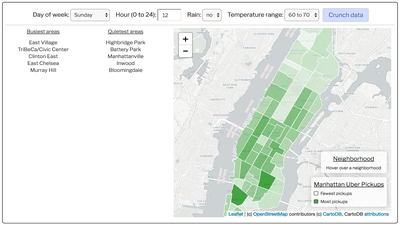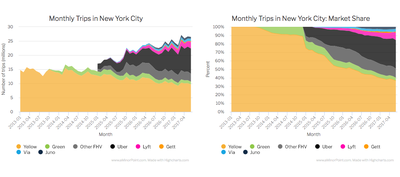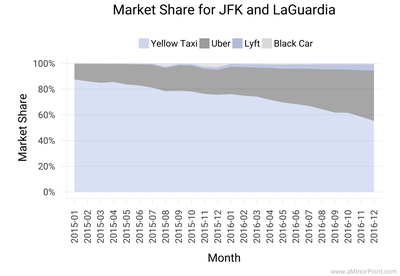Taxis vs Ride Sharing at New York City Airports
Analyzing ride data for taxis, Uber, Lyft, and others, at LaGuardia and JFK to see how the market has evolved
New York City publishes data on the trips taxis, Uber, Lyft, and other car services provide to New Yorkers. We can use that data to understand how the battle for market share at the New York City airports has evolved. Even though I typically didn't use Uber at the airport, my guess was that taxis were losing out to the ride share services. So what's the data show?
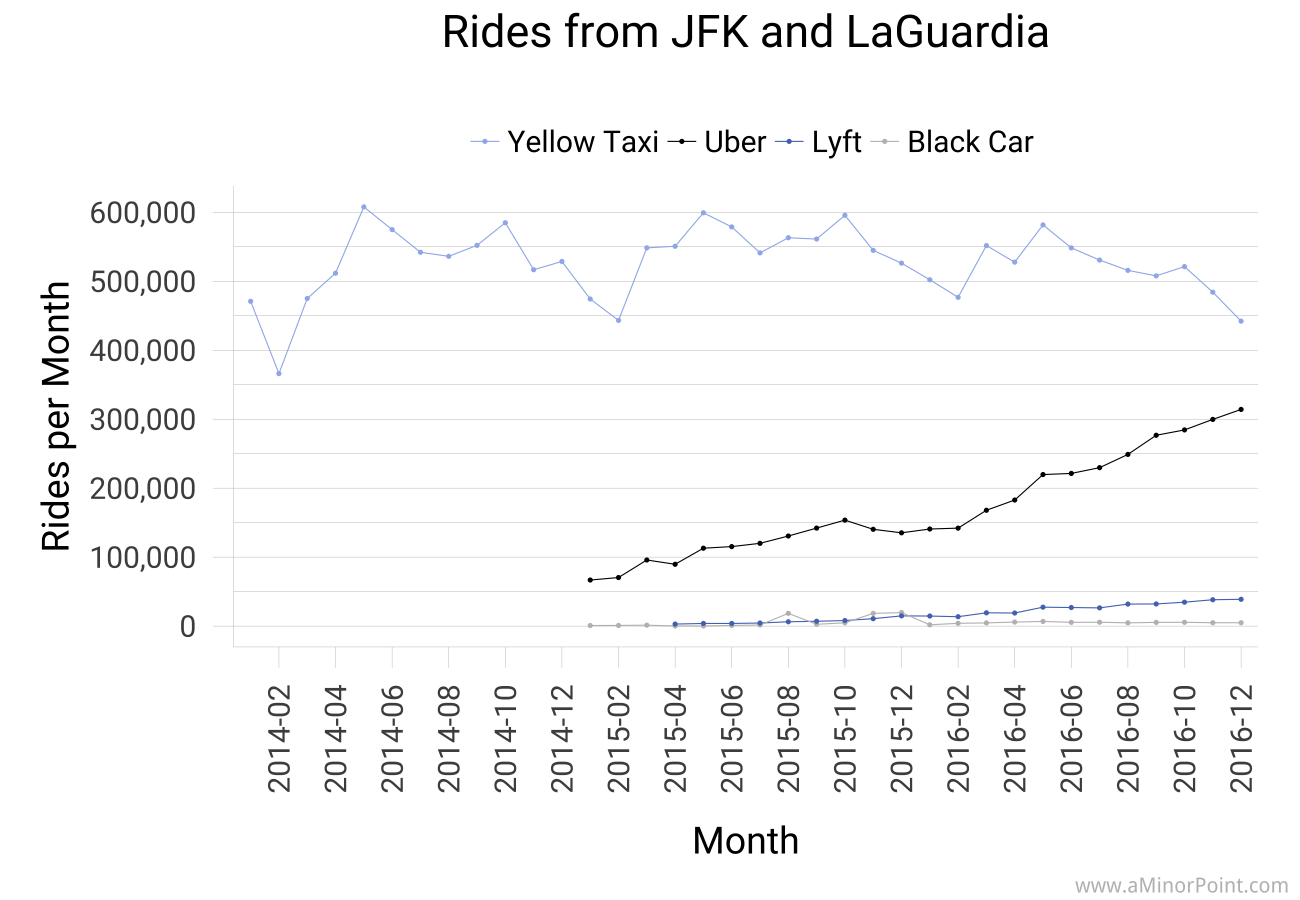
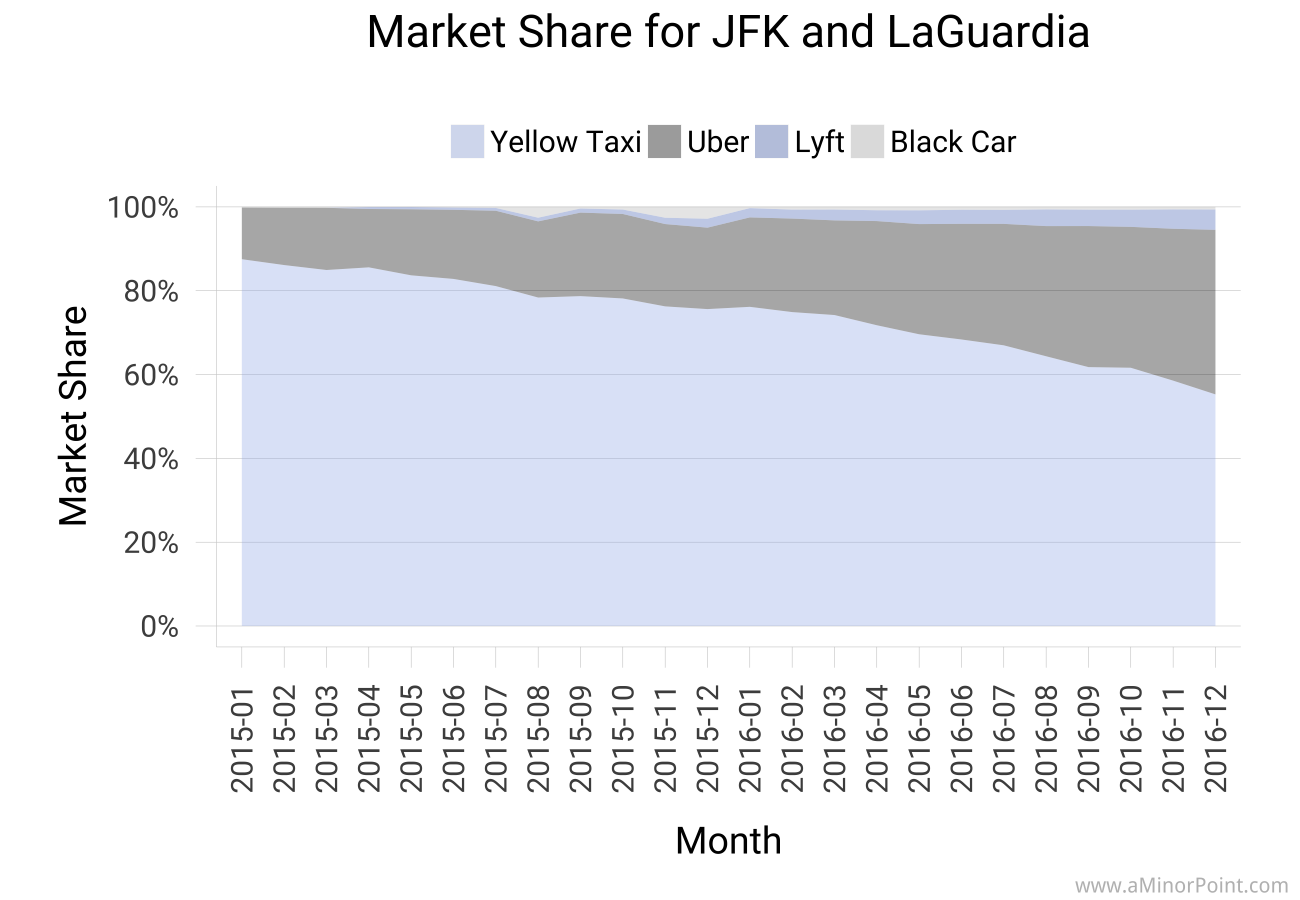
Yes, Uber has been gaining market share, big time. Lyft has also been steadily growing, albeit at a slower rate. But it's not quite that straightforward. While the ride sharing services have been gaining share, taxis have been doing OK in terms of the number of trips they're provided, at least until the middle of 2016 when they started declining (more on that below). It turns out the overall market for rides from the airports has grown. Not only has there been passenger growth at both airports, but the ratio of those passengers that take a car has increased at the same time.
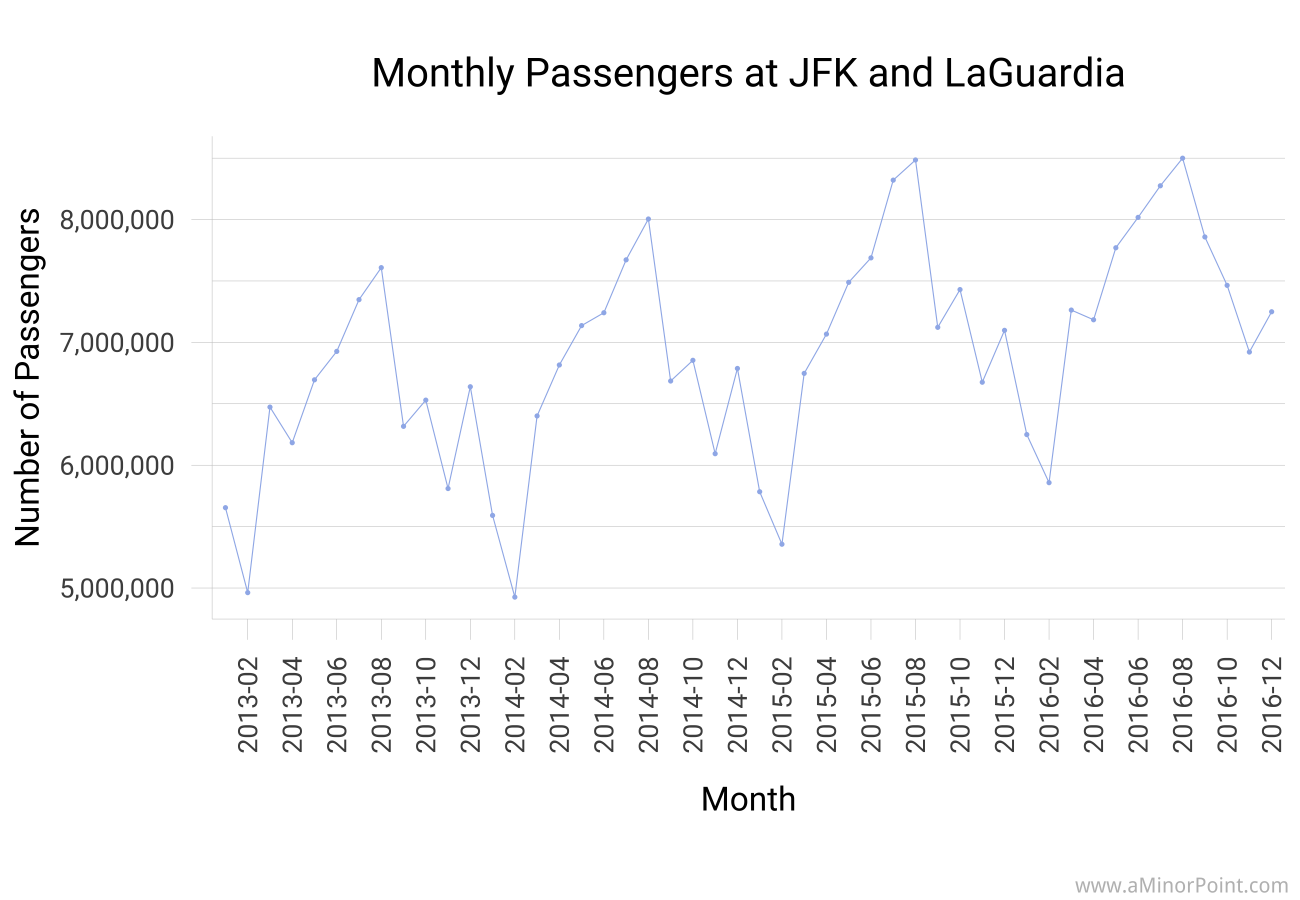

It seems that Uber and Lyft are helping to satisfy increased demand for rides from the airport, something which might be difficult for taxis to do on their own with a fixed number of medallions in the system, or at least without negatively affecting taxi availability elsewhere in the city.
If we know that taxis have been doing OK'ish at the airport in terms of number of rides, perhaps they've been suffering in other ways. We can also examine the average fare for taxi trips from the airport (we do not have the same data for the ride sharing services). Looking at the data, the average fare from the airport has been steadily increasing over the last two years, though at a slow rate.
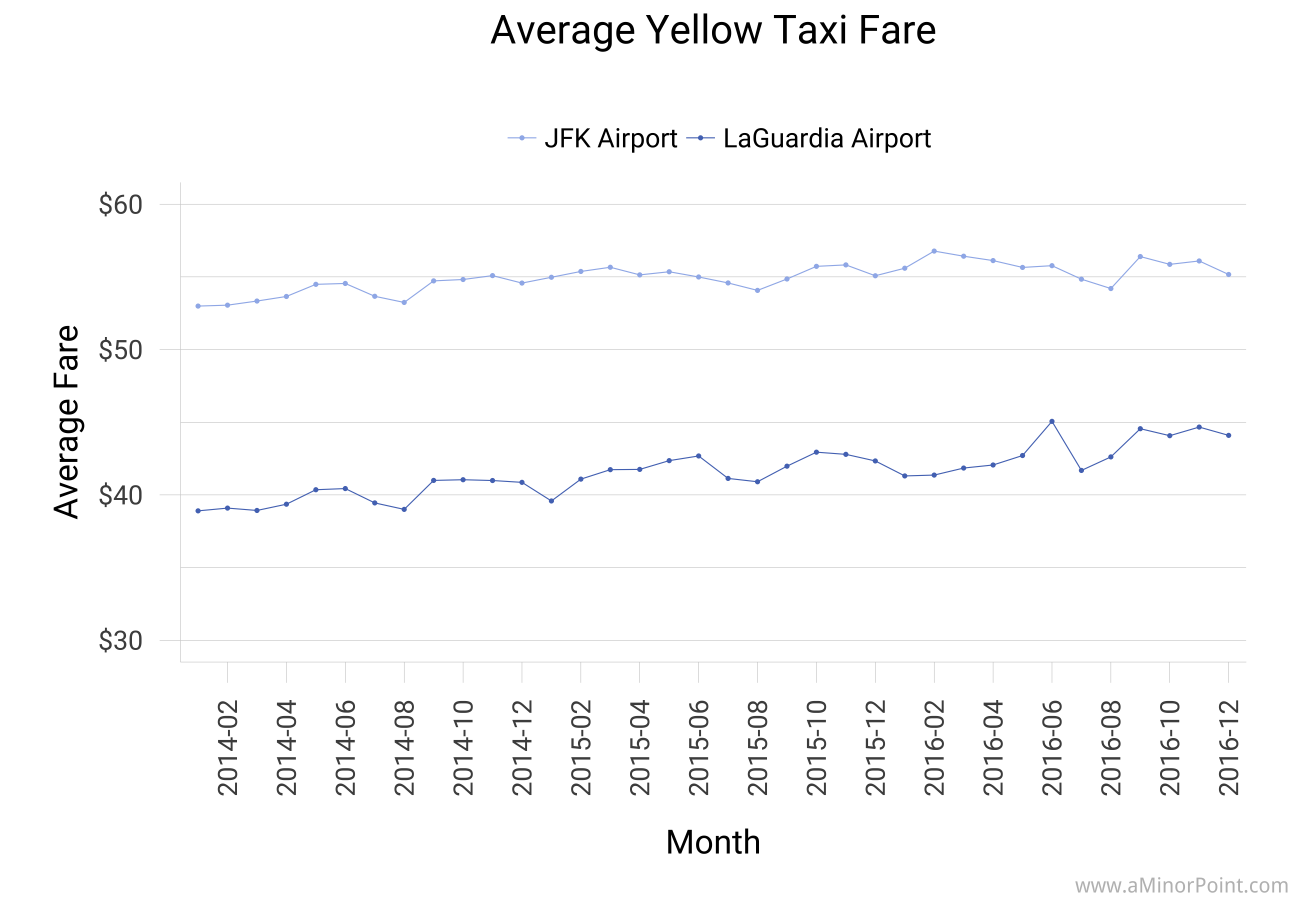
We can combine the fare data with the ride data to examine the evolution of taxi receipts for trips from the airport. It turns out the increased average fare has helped offset the lower number of trips, except for the most recent dip in LaGuardia trips. So despite losing some rides to Uber, Lyft, and others, taxis seem to be doing OK, at least at the airports.

JFK Airport
It's also worth looking at the individual airports to see if there are any differences in how ridership has evolved. Below is the data for JFK...
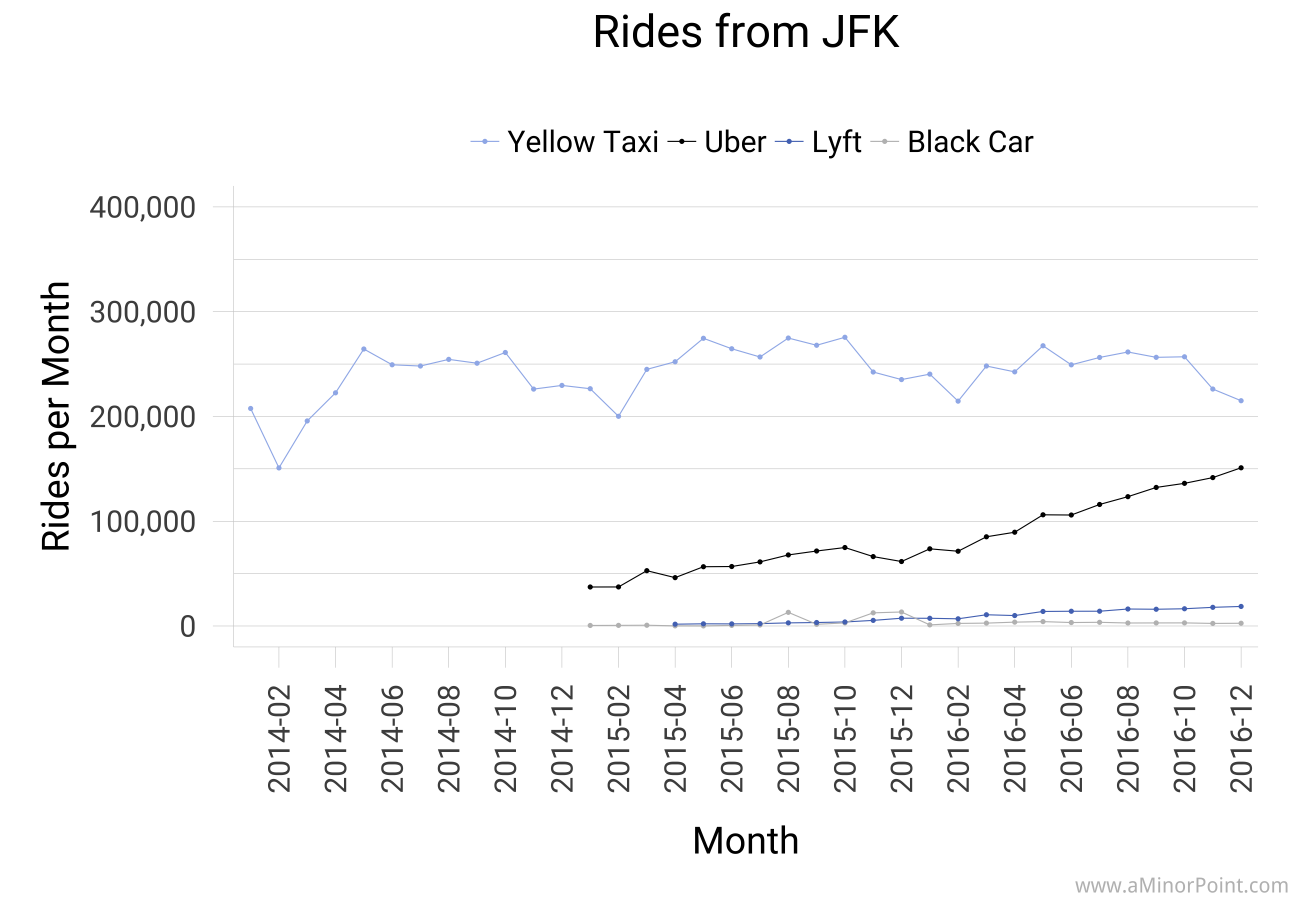
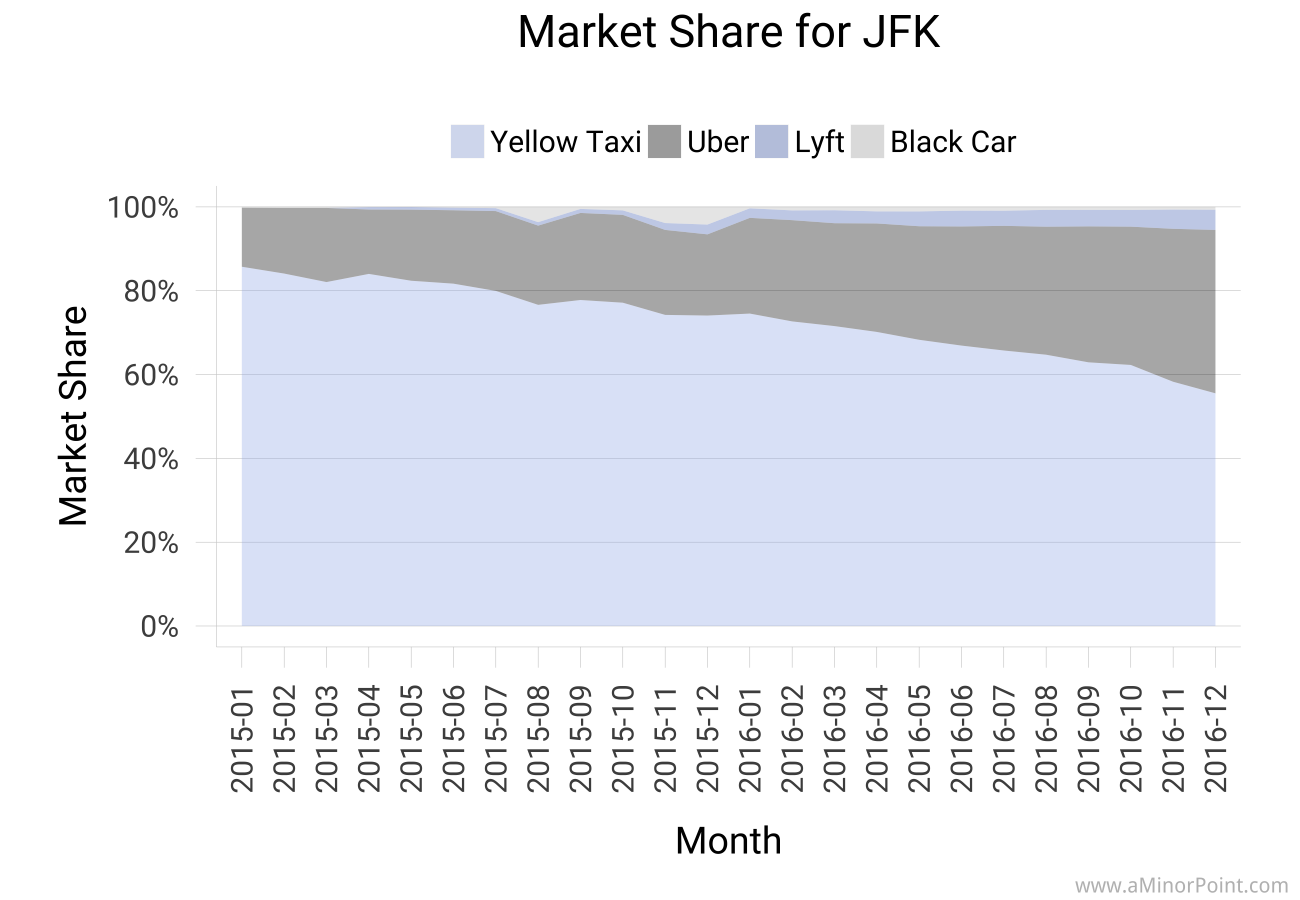
Which looks pretty similar to the aggregate. The YoY change in ridership for taxis and the overall industry is shown below.
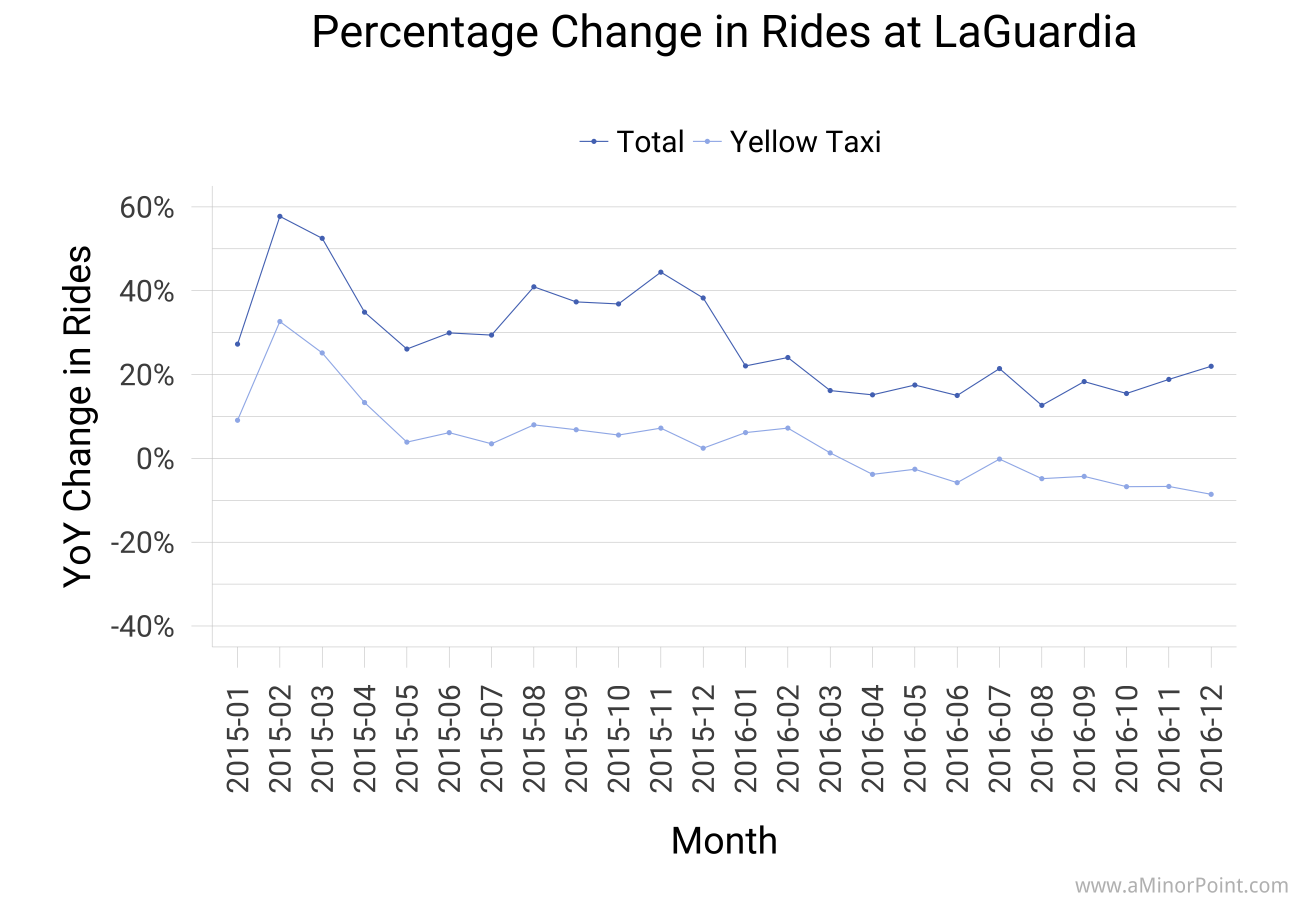
The growth rate did roll over into negative territory in the Spring of 2016.
LaGuardia Airport
Below is the data for LaGuardia...

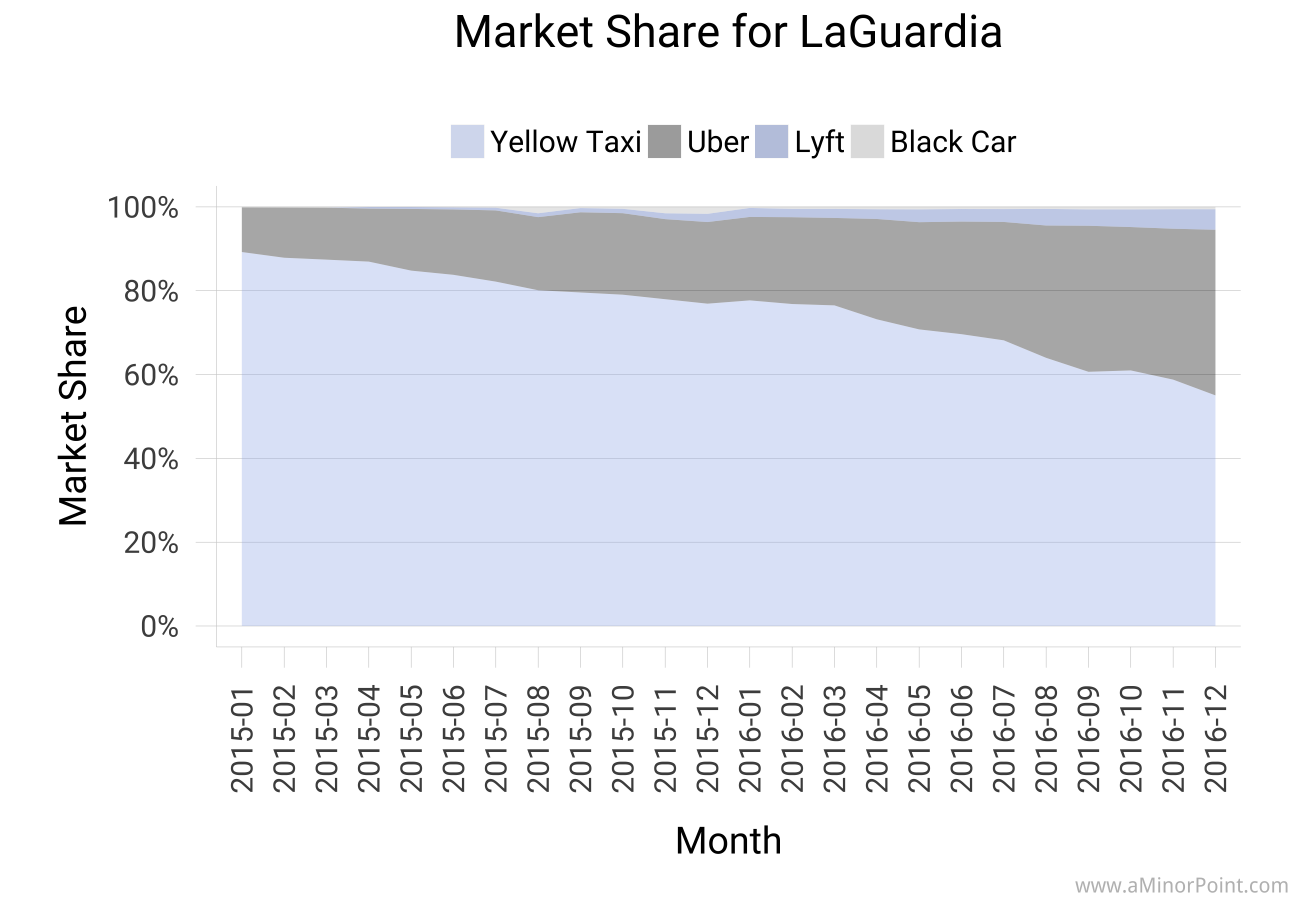
The YoY change in ridership for taxis and the overall industry is shown below.
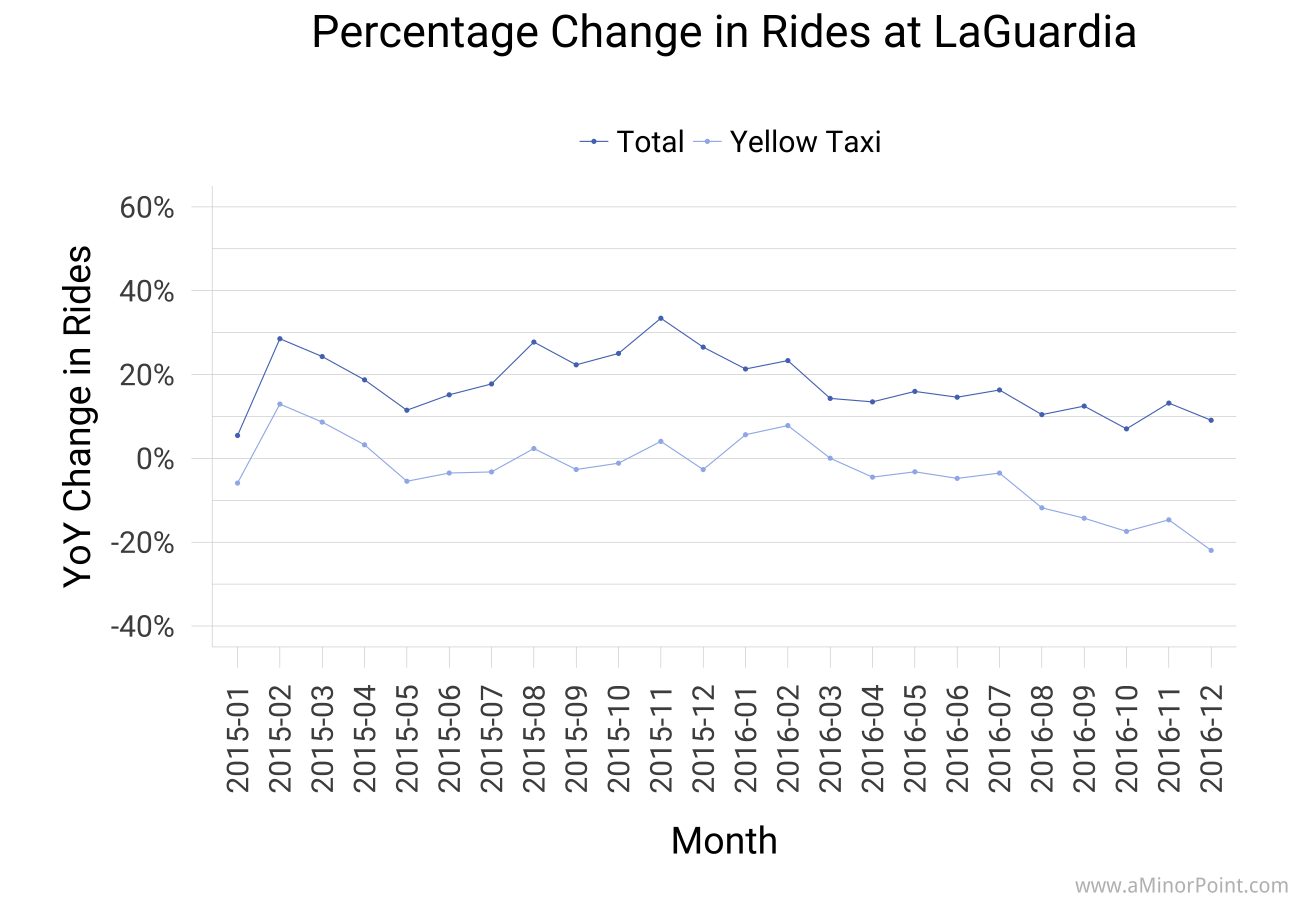
It's unclear to me what caused the accelerated decline in 2H 2016 at LaGuardia in contrast to the growth rate at JFK. One possibility is that it is related to the redevelopment work at the airport that started around that time and changed traffic patterns, creating a bit of a traffic nightmare at the airport. Perhaps that has deterred drivers from wanting to go to the airport to wait for a fare?
Seasonality
The Uber ridership growth is also notable as it bucks the seasonality trend shown in the taxi data. The taxi data mimics the seasonality in monthly airport passenger traffic shown below.
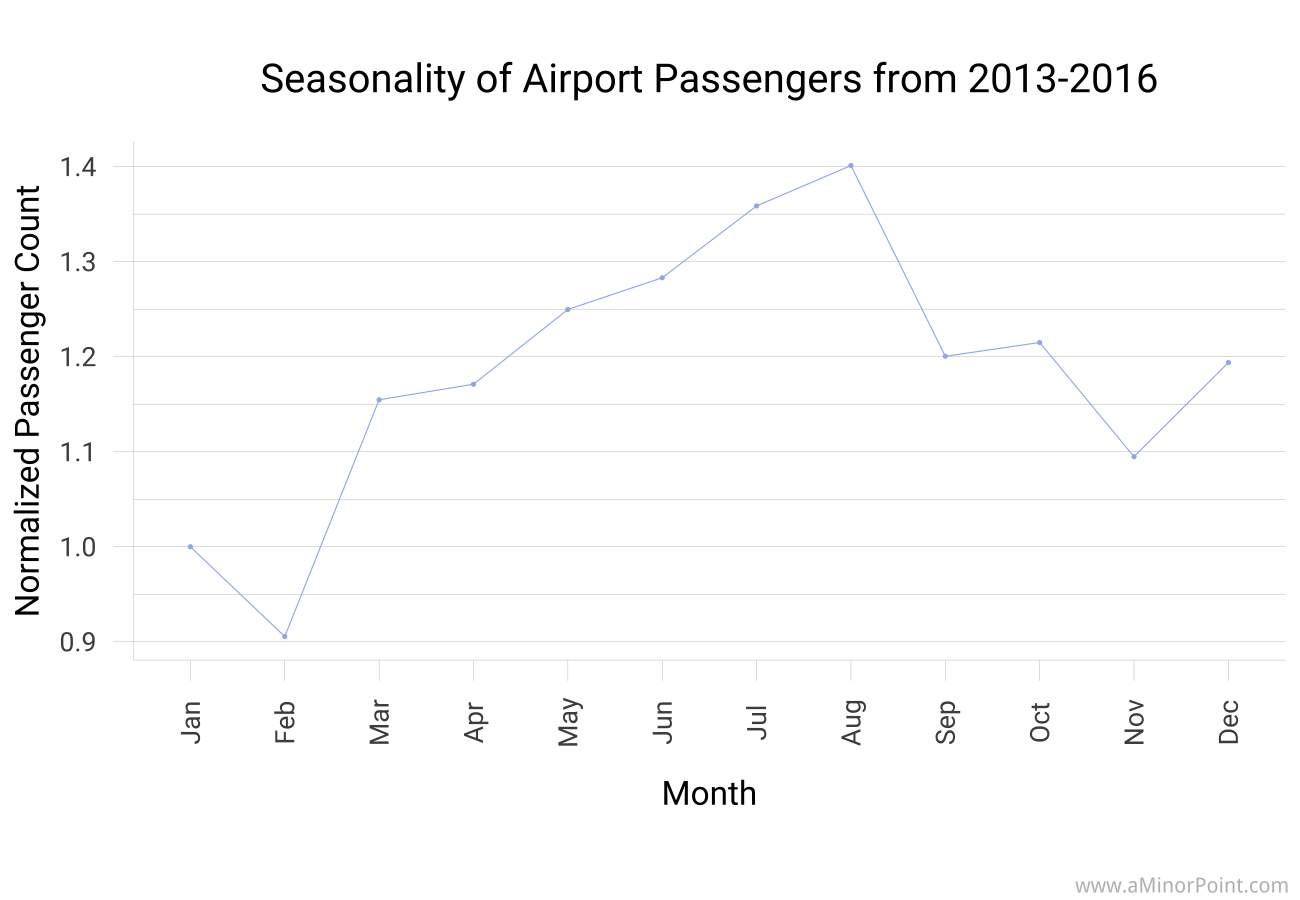
More about the data
The data for Uber, Lyft, and others doesn't begin until 2015. The data for taxis goes much further back, so we can get some sense of how taxi ridership was doing prior to the data becoming available for the other car services.
A quick note on the "Black Car" data: It is the leftover after tabulating the other categories. In the raw data there are a lot of rides for black cars that have no origin location listed. So it's likely the data reported in the charts under represents those rides.
